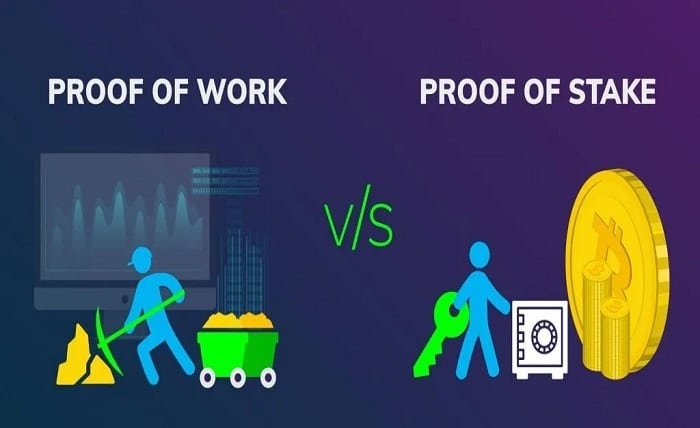Consensus mechanisms are the backbone of blockchain technology, ensuring secure and reliable transactions. Among these, Proof of Stake (PoS) and Proof of Work (PoW) stand out as the most prominent. This comparison explores their operational differences, advantages, and challenges, shedding light on how each mechanism shapes the future of decentralized networks. More Information about consensus mechanisms and investing strategies is on the official website of Quantum Voxis.
In-depth explanation of Bitcoin’s Proof of Work (PoW) mechanism.
Bitcoin’s Proof of Work (PoW) system is a fundamental part of how its blockchain operates. But what exactly does it mean? Think of it like a competition. Thousands of miners around the world race to solve complex mathematical puzzles.
Whoever solves the puzzle first gets to add a new “block” of transactions to the blockchain, which is like adding a page to a public ledger. This process is called mining, and the winner is rewarded with new bitcoins.
However, solving these puzzles isn’t easy. It requires a lot of computational power, which means miners need powerful computers running 24/7. These machines don’t just sip power, they guzzle it, consuming massive amounts of electricity. And that’s where the “work” in Proof of Work comes from—miners are proving they’ve put in real effort (in the form of energy) to validate transactions.
While PoW helps maintain the security and integrity of the Bitcoin network, it has some downsides. For instance, energy consumption is no joke—Bitcoin mining uses more electricity than some entire countries!
This has raised concerns about its sustainability in the long run. Plus, as more miners join the race, the puzzles get even harder, which means more power is consumed.
Cardano’s unique Ouroboros Proof of Stake (PoS) system and how it contrasts with Bitcoin’s approach.
Cardano operates differently from Bitcoin, thanks to its Ouroboros Proof of Stake (PoS) system. Instead of miners competing to solve puzzles, in PoS, the chance to validate transactions and create new blocks is given to those who already own and “stake” some of the cryptocurrency. In this case, Cardano’s native token, ADA. It’s a bit like holding a raffle ticket—the more ADA you hold, the better your chances of being selected to validate the next block.
Unlike Bitcoin’s energy-hungry Proof of Work, PoS doesn’t require vast amounts of computational power. Validators (the equivalent of miners) are chosen based on the amount of ADA they hold, making the whole process more efficient. No massive energy drain here, which makes PoS a much greener alternative.
One of the unique aspects of Ouroboros is that it’s built on academic research and peer-reviewed papers. It’s designed to be secure while also ensuring scalability. As Cardano grows, the system can handle more transactions without sacrificing speed or efficiency.
Energy efficiency and environmental impact comparisons.
When we talk about energy use in the crypto world, Bitcoin and Cardano are often compared. Bitcoin’s Proof of Work system, while incredibly secure, consumes an astronomical amount of electricity.
To give you a sense of scale, the Bitcoin network’s annual energy consumption is comparable to that of Argentina, a country with over 45 million people. This has led to concerns about its carbon footprint and long-term sustainability.
Cardano, on the other hand, uses far less energy due to its Proof of Stake mechanism. It’s been designed with efficiency in mind. Cardano’s energy consumption is a fraction of Bitcoin’s, making it a more eco-friendly option.
While Bitcoin’s mining process requires powerful machines running non-stop, Cardano’s staking system doesn’t demand the same level of energy-intensive computations.
The difference is striking. If Bitcoin’s energy consumption was a gas-guzzling SUV, Cardano would be the hybrid car quietly cruising past it. By cutting down on power use, Cardano not only reduces its environmental impact but also appeals to those looking for sustainable technology solutions.
Conclusion
Both Proof of Stake and Proof of Work offer unique strengths in achieving blockchain consensus. While PoW emphasizes security through computational effort, PoS prioritizes energy efficiency and scalability. Understanding their distinct mechanisms helps stakeholders make informed decisions, driving innovation and sustainability in the evolving landscape of decentralized technologies.

